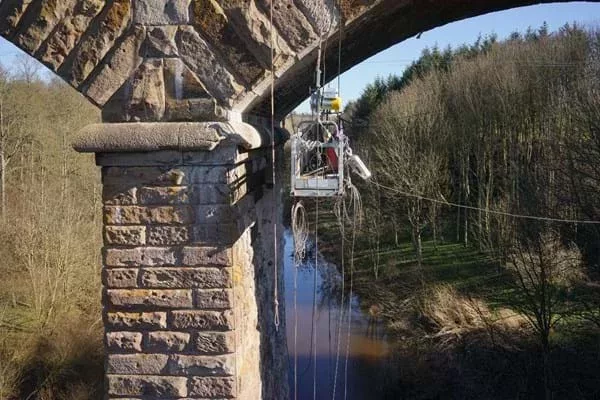National Highways has announced a new method of managing the Historical Railways Estate by strengthening collaboration with experts from across the heritage, environmental and active travel sector.
The new process, agreed with government and National Highways, means work will only take place once proposals have been assessed for safety, ecological and heritage value and potential future repurposing of structures.
The HRE team have spent months listening to various partners, groups and members of the public to help improve transparency and make the most of expertise in the field.
A Stakeholder Advisory Forum (SAF), comprising of representatives from across the sector, will now play a key role in supporting decision-making. This new system allows HRE to build on existing partnership work by engaging with interested groups and parties in a structured, formal setting that’s committed to meeting regularly.
The expertise of SAF members will inform decisions for structures requiring major works on issues ranging from ecological value, heritage interest or opportunities for active travel repurposing. They will also join the conversation on structures which could be transferred to local authorities as part of local plans.
“We’re pleased to announce a new, collaborative way of managing work on the Historical Railways Estate,” said National Highways head of Historical Railways Estate programme Hélène Rossiter.
“During the pause we worked closely with partners and stakeholders from across the heritage, environmental and active travel sector to understand how we can make our work more transparent and use their expertise to support our decision making. We set up a Stakeholder Advisory Forum (SAF) made up of representatives from across the sector, to support the way we make decisions on projects, particularly those identified for infill or demolition.
“This new process ensures that work is only undertaken after it has passed a series of reviews focused on safety, ecological value, heritage value and potential future repurposing of structures. If we recommend infill or demolition, the Minister will review the proposal once it’s been discussed by the SAF.”
The estate, managed on behalf of the Department for Transport, is made up of more than 3,200 structures, many of which are more than 100 years old.
Responsibility for maintaining it was transferred to the Highways Agency – now National Highways – in 2013. The age and condition of these overbridges, tunnels, viaducts, culverts and abutments present a number of challenges for engineers, which must be addressed while maintaining public safety and minimising cost.
While some require general maintenance and refurbishment such as repointing brickwork, others are repaired after vandalism or being struck by vehicles. In the past year 24 sites have been repaired after being vandalised, and fences erected to deter antisocial behaviour.
Elsewhere structures, mainly bridges, have to be replaced or have their beams strengthened, while some sites require the removal of vegetation that can cause damage if left unattended.
The HRE team will engage with relevant local authorities, community groups, partners and the public to set out plans for any significant work.
Details of the new way of working will be published on the HRE website.
(Picture – National Highways)





















